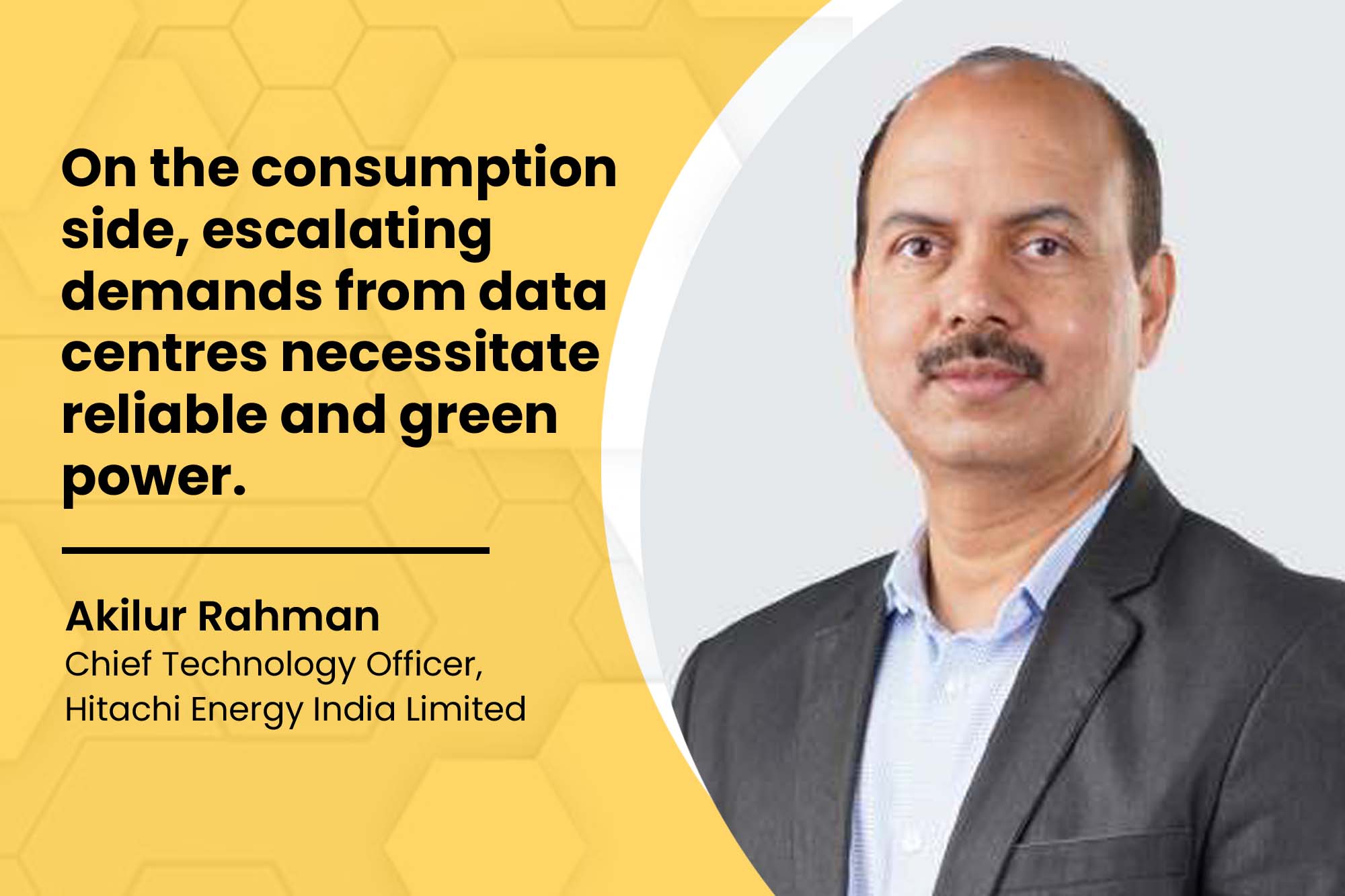Power electronics and HVDC advancements are key for clean energy
By EPR Magazine Editorial December 26, 2023 12:43 pm IST
By EPR Magazine Editorial December 26, 2023 12:43 pm IST

On the consumption side, escalating demands from data centres necessitate reliable and green power.
In the dynamic realm of energy, the evolution of smart and intelligent electricity is reshaping the grid landscape, from renewable energy targets to cutting-edge technologies and collaborative efforts. Akilur Rahman delves into the industry to share his views in talks with EPR Magazine.
Changing trends in the energy sector
Smart and intelligent electricity are pivotal considerations extending beyond just power generation, touching the entire grid infrastructure. The energy source starts with energy generation, moving through transmission, distribution, and storage, all crucial facets in the current context. The future of the energy system is intricately linked with sustainability goals, exemplified by the global push for carbon neutrality. The trajectory involves a substantial shift towards renewable energy, with a target of 500 gigawatts by 2030 in India alone.
The landscape is evolving, with wind, solar, and hydropower taking precedence in the generation mix. Simultaneously, advancements in power electronics, particularly HVDC (High Voltage Direct Current) technology, ensure reliable transmission from remote and offshore sources. The transmission and distribution sector witnessed innovations ensuring reliability through power electronics, HVDC technology, and advanced substation infrastructure. Moreover, the rise of green hydrogen production through renewable energy sources introduces a new dimension, with applications ranging from industrial processes to fuel cells.
On the consumption side, escalating demands from data centres necessitate reliable and green power. The electric vehicle revolution further underscores the need for diverse charging options, from normal and fast charging to ultra-fast and flash charging for buses at stops. Integrating green energy sources, microgrid technologies, and the electrification of various sectors, including industry and buildings, showcases the expansive impact on the grid.
The envisioned future power system entails a combination of AC and DC components, reflecting the increasing prominence of HVDC in long-distance transmission and its potential role in grid control, providing virtual inertia and real-time adaptability. The conventional grid infrastructure, encompassing transformers, switch gears, and substation automation, has been the backbone for decades. However, the infusion of digital technologies like virtual reality, augmented reality, digital simulation, artificial intelligence machine learning, big data analytics, blockchain, and cloud computing represents a paradigm shift. Cyber security becomes paramount with the heightened connectivity.Collaborative innovation for efficiency
The synergy between the traditional core technologies and the digitalisation wave involves integrating additional sensors, edge computing, and cloud connectivity. The resultant data fusion, incorporating factors like weather and market dynamics, facilitates the creation of smart Key Performance Indicators (KPIs). These KPIs cover productivity, reliability, quality, asset health, energy efficiency, safety, environment, and security, driving improved asset and operational performance. Pursuing a smarter grid necessitates collaborative efforts among stakeholders, including OEMs, technology providers, the utility industry, and academia. This convergence of power automation and digital technologies aims to achieve real-time KPIs, marking a transformative shift in the industry.
Beyond technological advancements, emerging business models, such as energy storage as a service, battery as a service, and charging as a service, add a layer of complexity. This evolving landscape requires extensive collaboration to realise a more intelligent and efficient grid, ultimately providing smart electricity to consumers who are not just recipients but, in some instances, electricity producers.
Spokesperson: Akilur Rahman, Chief Technology Officer – Hitachi Energy India Limited
We use cookies to personalize your experience. By continuing to visit this website you agree to our Terms & Conditions, Privacy Policy and Cookie Policy.